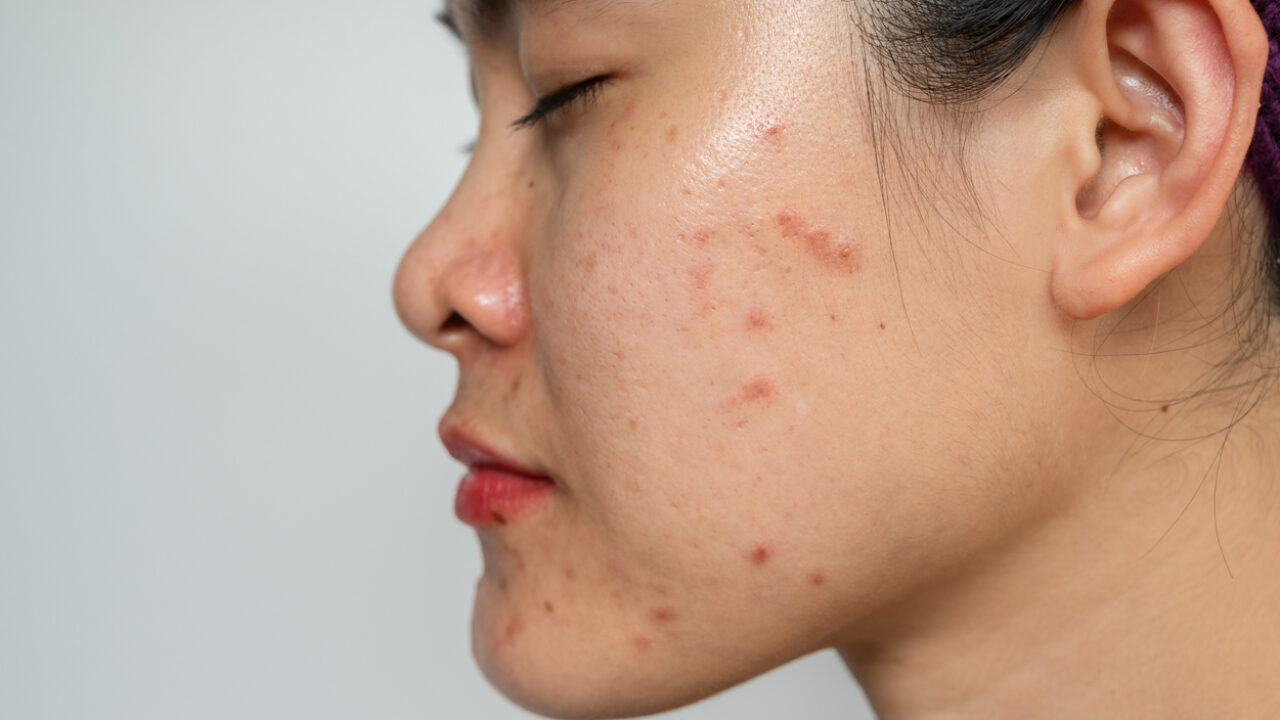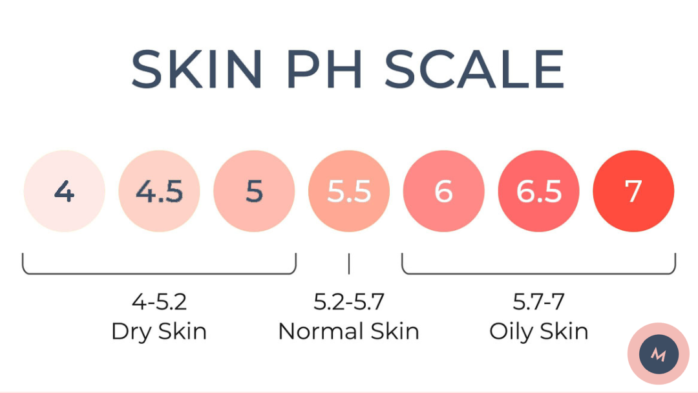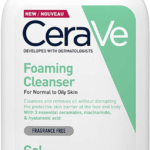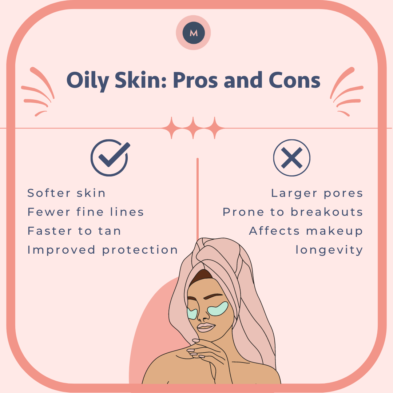
Looking for how to get rid of oily skin? It helps to understand what causes it in the first place, so you know which products to buy – and which to avoid. Let us help
JUMP TO SECTION
Click the links below to jump to the relevant section:
How to tell if you have oily skin
If you suffer from oily skin, you’ve probably tried various products and methods to reduce the slick. But do you actually know the reasons why your skin is oily?
If you know more about the science of oily skin, you’ll have a much better chance of stopping the sebum, mattifying your complexion, and even getting rid of it.
At the least, it can help you choose which products and ingredients to buy, and which to avoid.
Before we get into the causes and treatments for oily skin, we wanted to explain how to tell if you have oily skin. We go into more detail in our What skin type do I have? guide, but in summary:
However, if these three factors only impact part of your face – for instance, if you only have visible pores and shine in the centre of your face but not on the sides – then you have combination skin. The most common form of combination skin is dry cheeks with an oily T-Zone. And this T-Zone gets its name from the fact it creates a T shape on your face.
What’s more, the seasons and weather can play a part in how oily your skin is. You may find that it’s less of a problem in winter but becomes slick AF in the summer. This is because heat and humidity can lead to more oily skin. Lifestyle factors, such as stress can also play a part, as well as other hormonal imbalances or fluctuations.
FURTHER READING: The best moisturiser for oily skin | Best BB cream for oily skin |
 mamabella
mamabella Everybody’s skin produces a waxy substance called sebum, released via sebaceous glands found beneath our pores. This sebum is useful because it helps to keep your skin hydrated and healthy and it sits in the middle layers of your skin, near your hair follicles.
The highest concentration of sebaceous glands is found on your face, scalp and back (which is why these are problem areas for excess oil and spots). You may have up to 900 of these glands per square centimetre in these concentrated areas. That’s a lot of oil being produced…
Specialised cells (sebocytes) dissolve and release sebum into the sebaceous glands. The sebum then travels through the follicular duct that connects the sebaceous gland to your hair follicle. The hair pulls the sebum up and onto the surface of your skin.
Once on the surface, this oily, waxy consistency moisturises the skin and hair through a mixture of fatty acids, sugars, and natural chemicals. This combination helps minimise water loss and protect your skin from external bacteria.
The oil produced by your skin is therefore completely natural and totally normal. However, for some people, the sebaceous glands go into overdrive. This causes them to produce too much oil which can lead to excess oil being stuck on your skin without anywhere to go. Due to its weight, it can’t be evaporated so it ends up leaving your skin feeling greasy.
It also clogs pores, and makes them swell, which in turn increases the amount of dirt and bacteria that can get inside, and all of this can lead to breakouts and acne. It’s not the sebum itself that causes problems, it’s the fallout from the extra oil.
FURTHER READING: Best foundation for oily skin, acne, spots and blemishes
 Getty Images/iStockphoto
Getty Images/iStockphoto For many oily-skin sufferers, it’s most likely caused by a hormonal imbalance, such as puberty or pregnancy. Some people also have a genetic predisposition to having oily skin. These are much harder to treat and manage.
However, there are potential contributors that can manage, and steps you can take to reduce the impact. According to celebrity facialist Dr. Debbie Thomas, “stress, diet, and general lifestyle can all impact how your skin behaves.” So taking time to chill, cutting back on processed foods and alcohol, and eating more fruits, veg, and whole foods can help. We explain more about this in our skin food guide.
 CeraVe
CeraVe Elsewhere, you’re going to want to look for products with proven oil-fighting capabilities. CeraVe is an expert when it comes to skincare products and it sells cleansers and moisturisers for oily skin that are both affordable and highly effective.
We love the brand so much, we wrote a whole article just about its range: The best CeraVe products for all your skincare concerns.
For oily skin, we particularly recommend the CeraVe foaming cleanser and the CeraVe moisturising lotion.
You might think that if you have oily skin, you don’t need a moisturiser. This is a myth. The best moisturisers don’t add water to your skin, but instead help to retain water and moisture in the outer layers. This keeps your skin hydrated. In fact, if your skin isn’t hydrated enough, it can produce even more oil to compensate.
Just be aware that you need a light, non-greasy option designed for oily skin if you really want to reap the benefits.
FURTHER READING: CeraVe Hydrating Cleanser review: A superb cleanser that fixes the skin as it cleans
If you want to treat oily skin you’ll need to:
 Getty Images/iStockphoto
Getty Images/iStockphoto Having oily skin means you have to be on top of your game when it comes to consistently sticking to your skincare routine. If you miss your daily face wash then you’re going to pay the price. Not washing your face regularly will mean you’ll get a build-up of oil or skin products, which can then clog your pores and lead to a breakout of spots.
However, washing it too much interferes with its pH balance and could make things worse.
Avoid soaps and cleansers with fragrances, added moisturisers, or harsh chemicals. Try not to use physical, as opposed to chemical, exfoliators, unless they’re specifically designed for acne. Or are described as gentle. This is because using rough flannels or exfoliators can risk stimulating your skin to produce more oil, which makes breakouts worse.
A fantastic product to use daily to clean oily skin is the clarifying cleanser from facetheory. It’s not too expensive, at £12.99, but will make a big difference if used regularly because it contains salicylic acid. This gentle acid penetrates deep into your pores to keep them clear. This cleanser also contains glycolic acid and lactic acid, which helps exfoliate and deep cleanse your skin.
A toner is great when you’re looking to get rid of oily skin because it penetrates your pores to give a more thorough cleanse. It will help to remove excess oil and other impurities.
“We know that one of the primary causes of breakouts is clogged pores, so it is imperative to flush them,” said Julia Marinkovich from skincare brand COSRX. “Adding a toner to your summer skincare regime can help close pores and tighten cell gaps after cleansing, reducing the penetration of impurities and environmental contaminants into the skin.
“Not only are toners great for de-congesting pores, but they can also support the skin inpreventing blackheads and stop blemishes from appearing. They are a fantastic preventative step for those prone to breakouts.”
Like with cleansers, avoid toners that contain harsh chemicals, and alcohol. We’ve got a host of suitable recommendations in our best toner guide, and we explain more about why toner is important and how it works in our guide: What does face toner do – and why is it so important?.
Carbon Theory takes our top spot though, with its Facial Purifying Tonic (£14). It contains natural tea tree oil, citric acid, and grapefruit extract meaning it gently cleanses and refines pores all while reducing redness and inflammation.
The £19.95 AHA/BHA Clarifying Treatment Toner from COSRX is also great for clearing the skin, keeping sebum under control, and preventing breakouts in the future.
Moisturiser is usually the first product to go when looking for how to get rid of oily skin. However, if you find the right moisturiser for oily skin it can actually be a gamechanger.
Aloe vera is a great ingredient to look out for when buying a moisturiser for oily skin because it can have a soothing effect. Gel formulas are typically better than creams. Lightweight lotions can also be beneficial. Also, make sure you’re buying a moisturiser that describes itself as non-comedogenic. This means that none of its ingredients should clog your pores and exacerbate the situation.
Skincare typically takes four to six weeks to make an impact. This is because of your skin renewal cycle so you need to give any products time to bed in before giving up. Changing your skincare too often can also cause your skin to become imbalanced and make oily skin worse.
Once you’ve found what works as part of your mission to get rid of oily skin, it’s vital to be consistent and stick to your skincare routine.
Also – sadly – in the process of clearing your pores and balancing your oil production, things might get worse before they get better. This is known as skin purging and we’ve got a whole guide on how to manage that here.
 mamabella | mamabella
mamabella | mamabella It’s not all doom and gloom when it comes to having oily skin. There are some pros, to go with the cons.
The pros of having oily skin are as follows:
The downsides to having oily skin include:

Kat is a freelance journalist, photographer, and the founder of Simply Gender Free – a company dedicated to smashing gender stereotypes in kids’ products. As a mum of two, Kat is passionate about making the world a better place for the next generation
